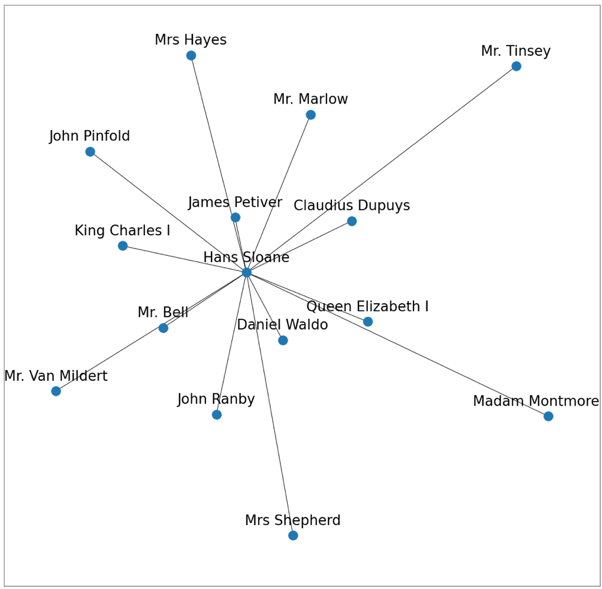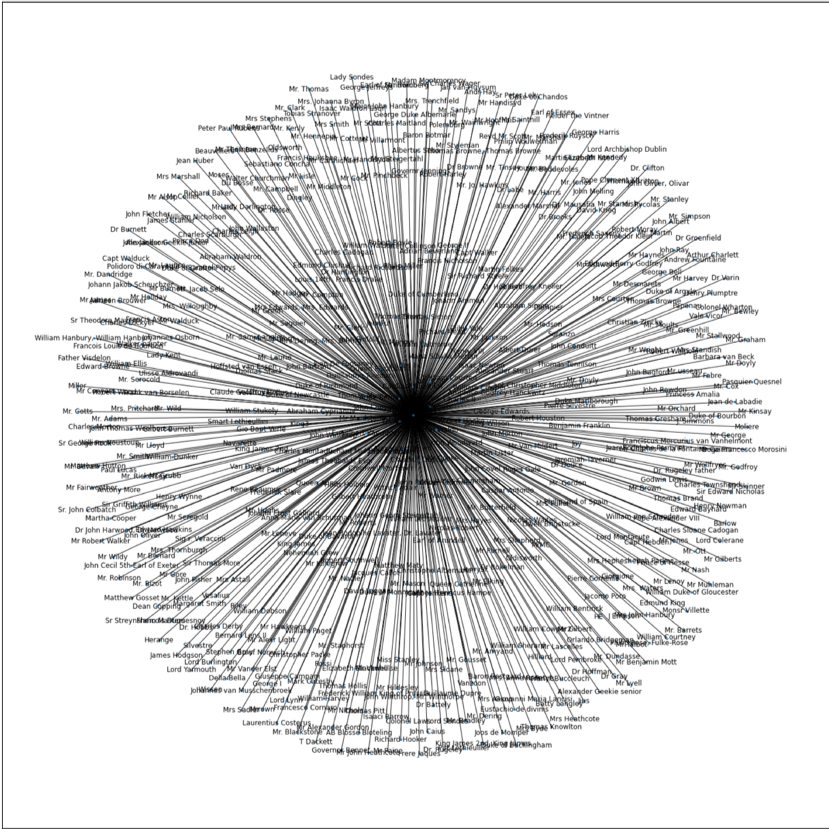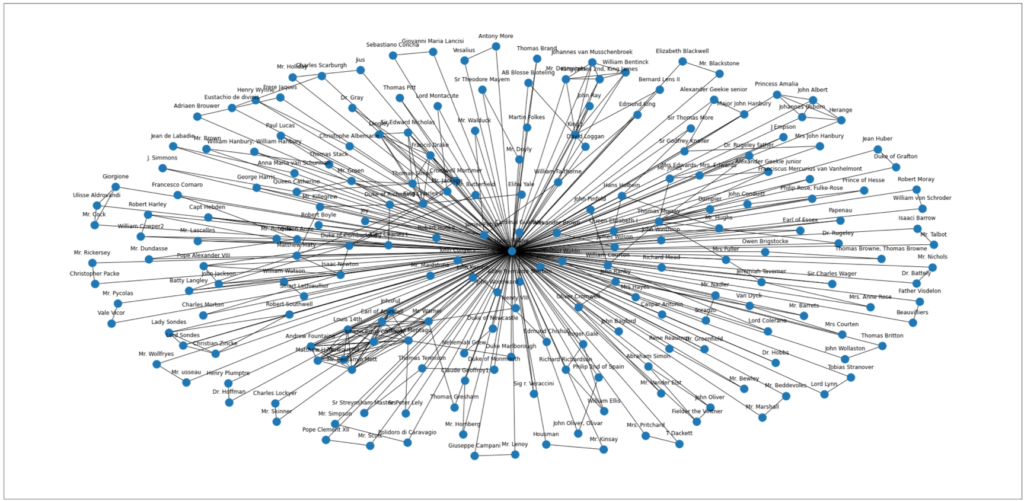Daniele Metilli (they/them) is a Research Fellow in Advanced Data Architectures for Digital Humanities at UCL Department of Information Studies. In the Sloane Lab project, they are working to manage the collected knowledge, model it through Semantic Web technologies, and publish it as Linked Data for further exploration and reuse.
On the 14th of September 2022, I had the honour to present a preliminary study about network analysis applied to Sloane Lab data at the 6th European Conference on Social Networks in London. The study is titled “Towards a Network Analysis of Hans Sloane’s Collection: A Preliminary Study” (presentation in PDF format available here).
This work was developed by the Sloane Lab technical team, led by Andreas Vlachidis, under the supervision of the principal investigator Julianne Nyhan and in partnership with the Natural History Museum and British Museum. An important contribution was given by the students of the Historical Network Analysis research seminar at TU Darmstadt.

Throughout his life, Hans Sloane amassed more than 70,000 disparate objects, which were carefully catalogued in more than 30 manuscripts written by Sloane himself and his collaborators. At present, only 5 of these manuscripts have been encoded in a machine-readable format in a previous project, Enlightenment Architectures.
By looking through the catalogues, it is easy to notice how many different types of objects are found in them. Each entry provides a brief description of the object. Many entries also contain mentions of people and places, which usually indicate the provenance of the object, i.e., whom and where the object was sourced from.
Unfortunately, it is not always easy to find out people’s identities, because the entries often report only the surname, or sometimes even just an initial. The Natural History Museum has been working to fill in this missing information through the contribution of a student, Marta Gil Caruncho, under the supervision of Vicky Pickering and Mark Carine.
For our initial network analysis study, we have decided to focus on one manuscript containing seven catalogues (plus two indexes). The manuscript is called Miscellanea, and the catalogues included in it are: Miscellanies; Antiquities; Seals; Pictures; Mathematical Instruments; Agate Handles; Agate Cups, Bottles, Spoons.
The Miscellanea manuscript is the subject of a previous publication by Kim Sloan and Julianne Nyhan in the Journal of the History of Collections, Enlightenment architectures: the reconstruction of Sir Hans Sloane’s cabinets of ‘Miscellanies’, whose insights were crucial for the development of our network analysis study.

Our network analysis dataset is modelled as a graph that is composed of nodes, representing people, and edges, that represent relations among people. The actual way in which Sloane knows each of these people may differ, and it will be interesting to explore them further, but at this stage we are not yet differentiating between them.
Instead, we used the data to build an “ego network”, i.e., a graph with Sloane as the centre node, and everyone who is connected to him as a peripheral node. The weight of each edge that connects Sloane to a person is given by the number of times they are mentioned in the catalogue, shown graphically as the distance between nodes.
This allowed us to build a graph for the whole Miscellanea manuscript, and a separate graph for each of the individual catalogues. The graphs look markedly different from one another, suggesting that different types of object were acquired from different networks of people. Furthermore, we can easily visualise the people who had the most important role.
For example, James Petiver, a botanist and collector, is mentioned more than 30 times in four different catalogues. Abbé Bernardo Sterbini, an Italian antiquities dealer, is the most mentioned person in the Antiquities catalogue, together with Cardinal Filippo Antonio Gualterio (or Gualtieri), whose collection was acquired by Sloane after his death.

One aspect that we decided to focus on in our study is the role of women. By highlighting women in the graph, it is easy to see that they had a significant role in building the collection. For example, Maria Sybilla Merian, a German naturalist and illustrator, is one of the most mentioned people in the Pictures catalogue.
Another aspect we are interested in is the analysis of data absences, i.e., finding out which people are not mentioned and why. Only 16% of catalogue entries mention a person, and we know that many people who contributed to the collection have been historically overlooked. We plan to further investigate this topic in a future study.
As we add more data and further refine our work, a more detailed analysis and comparison of the graphs will allow scholars to better understand the structure of the different networks, the roles of the individual people, and how they all fit together in the larger Sloane social network.

